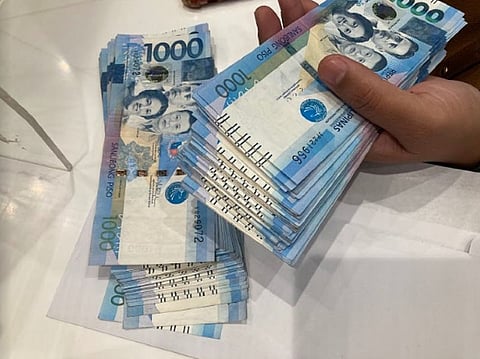Peso hits three-year low: Perfect time for OFWs to remit?
BSP data shows local currency touched ₱59.045 vs US$, near record low hit in 2022

Manila: The Philippine peso has tumbled to an three-year low, weighed down by a deepening corruption scandal that is eroding both investor confidence and economic fundamentals in the Asian nation.
On Monday (November 10, 2025), it touched ₱59.045, as per Bangko Sentral ng Pilipinas (BSP) data.
This followed the breach on October 28, 2025 when the peso hit the ₱59 to $1 mark for the first time in three years, breaking its previous record of ₱59.17 set in 2022.
Flood infrastructure scam
At the heart of the slide is a widespread scandal and overpricing engulfing state-funded infrastructure projects — particularly flood-control schemes — in which alleged ghost projects were exposed, highlighting inflated contracts and missing funds.
As government spending falters and growth slows (GDP growth tinged at 4.0 % in Q3), markets are increasingly concerned about the Philippines’ ability to deliver on plans and maintain momentum.
On Monday, the peso briefly improved to 58-level after ending the week’s first trading session at 58.96, before closing at ₱59.045, according to the Bangko Sentral Bank data.
The average for the month stood at 58.815 vs the greenbrack.
Forex trading volume increased to $1.38 billion from $1.21 billion on Friday.
Stocks down
On the other hand, the Philippine Stock Exchange index (PSEi) shed 0.99% to 5,702.64 points on Monday, while All Shares were down by 0.46% to 3,498.43 points.
Only the Mining and Oil index gained during the day after rising by 7.19%.
The services index, meanwhile, registered the biggest drop among the sectoral gauges after it fell 1.36%.
It was trailed by Financials, 1.34%; Property, 0.78 percent; Holding Firms, 0.48%; and Industrial, 0.32%.
Volume reached 1.86 billion shares amounting to $6.96 billion.
Decliners led advancers at 100 to 85, while 56 shares were unchanged.
Analysts say tht despite cheaper valuations, Philippine stocks slid following the release of the GDP (gross domestic product) figures.
Local stocks, meanwhile, slid as investors remain cautious following the weaker-than-expected growth in Q3 2025.
With high-profile revelations and protests mounting (another one planned on November 30, 2025), foreign and domestic investors are demanding higher risk premiums.
Capital is flowing out, or being held back, making it harder for the peso to find resilient footing.
As infrastructure investment stalls and household consumption cools, the economy is losing speed. Weaker fundamentals make the currency less attractive.
External pressure
A strong US dollar and persistent trade- and remittance-related pressures are exacerbating the peso’s slide. With fewer buffers and weaker inflows, the currency is more exposed.
The peso’s tumble isn’t simply a matter of weaker external conditions — it is deeply rooted in a loss of faith in the Philippines’ governance and economic trajectory.
Unless reforms are enacted to shore up transparency, reassure capital markets, and restore spending momentum, the currency may remain vulnerable to further drops.
Sign up for the Daily Briefing
Get the latest news and updates straight to your inbox


